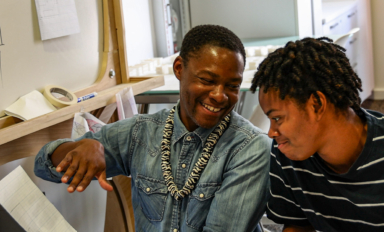A stunning sample of Beaux-Arts architecture, the Cook County Hospital in Chicago once anchored the city’s medical district. But after 86 years serving as the nation’s largest public hospital, it closed in 2002.
The iconic structure remained empty for nearly 20 years as developers staved off the threat of demolition. Now as part of a massive $1 billion 13-acre redevelopment plan, the designated landmark has been reimagined as a mixed commercial, office, and hospitality space. The $140-million project brought together two hometown design firms, with Skidmore, Owings & Merrill (SOM) designing the multi-use space, and KOO Architecture designing the interiors of the Hyatt House and Hyatt Place hotels.
SOM’s work included replacing 4,500 pieces of terracotta on the neoclassical facade and restoring the ornate interior plasterwork, marble staircases, and terrazzo floors.
KOO focused on creating a restorative interior. “It was really in our minds to bring back the art of hosting and hospitality so the guest experience feels inclusive and welcoming, and also very relaxing and healing,” says Megan Walters, senior interior designer at KOO in Chicago. “Guests need somewhere that is a place of respite.”







 Home
Home































































































































































































































































































































